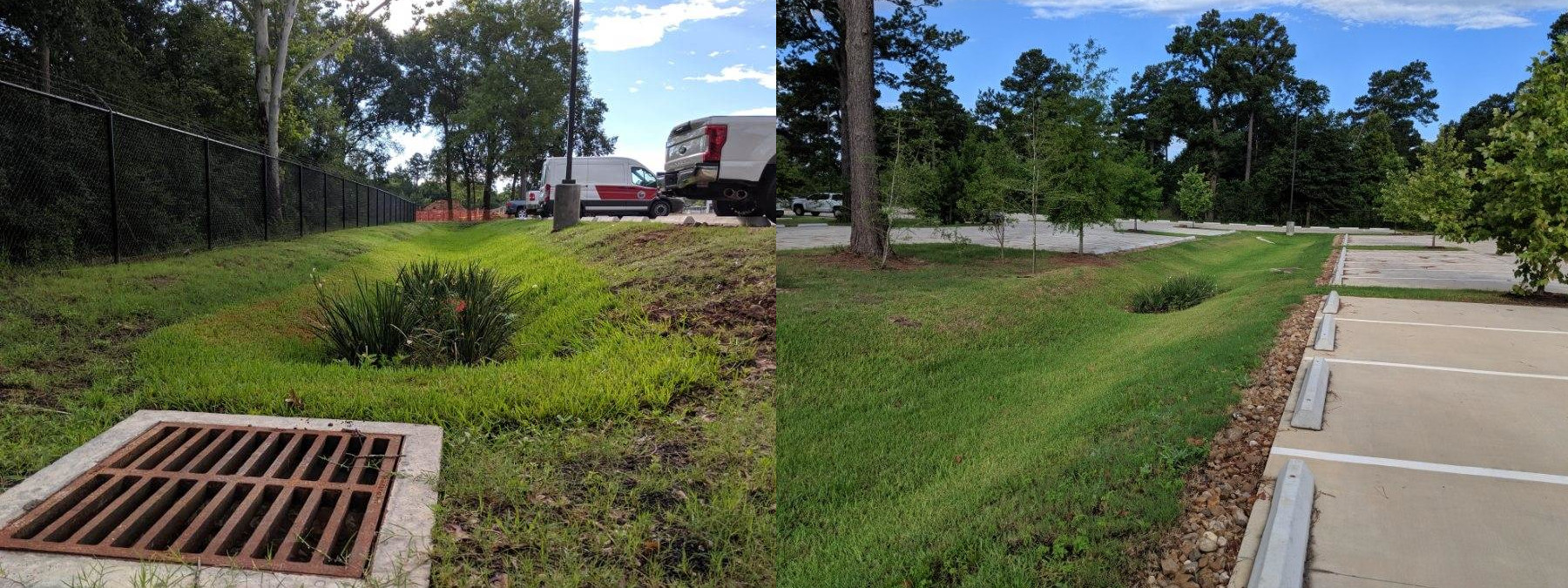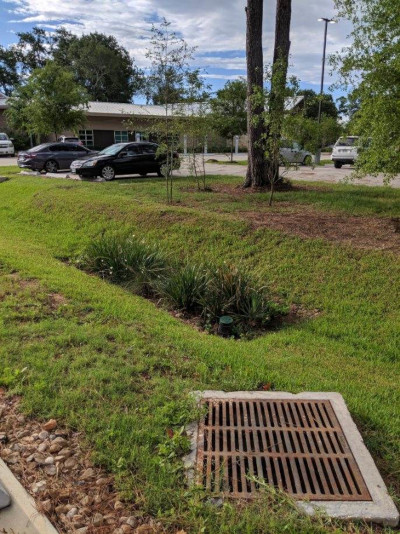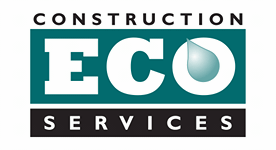
Precinct 4 Continues to LEED by Example
SUMMARY
The new service center is located south of Alice Road on the west side of Texas 249 in Tomball. The current 31,380 square foot location was chosen because of its higher elevation and will house trucks and tractors that will be dispatched to service the precinct. Precinct 4 employees from parks, administrative, road and bridge departments are currently working out of the service center. Additional construction at the center will add five new structures for a total of 71,000 square feet to the site and will be completed in 2 phases.

CHALLENGE
Harris County Precinct 4 decided to go with developing their new service center as a Low Impact Development site to implement the allowable practices in the counties Low Impact Development Design Manual that allows them to meet their water quality requirements as well as offers a reduction in detention. Harris County Precinct 4 has done many types of Low Impact Development projects, including roadways and parks, and they continue to lead by example by having their newest service center facility implement a variety of sustainability practices.
SOLUTION
For the first phase, Bioswales are placed throughout the parking lot, primarily between the head in parking stalls. Water sheet flows from the parking lot and enters the swales running perpendicular to the parking stalls. There is a courtyard garden that catches some rainwater and transports it to a small bioswale that wraps around the buildings. The bioswales then drain through FocalPoint High-Performance Modular Biofiltration Systems (HPMBS), scalable biofiltration systems which combines the efficiency of high flow rate engineered soils with the durability and modularity of a highly pervious expandable underdrain/storage/infiltration system. The water’s final destination on the property is to a small detention pond before ultimately out falling off site.
The second phase incorporated open-jointed permeable pavers to further slow and treat water as it runs off of the site. By distributing the water management features throughout the site, instead of simply having one large pond, the designers were able to extend the time of concentration, decrease peak flows, and ultimately lower their detention required. This along with achieving their water quality goals made Low Impact Development the obvious choice.


